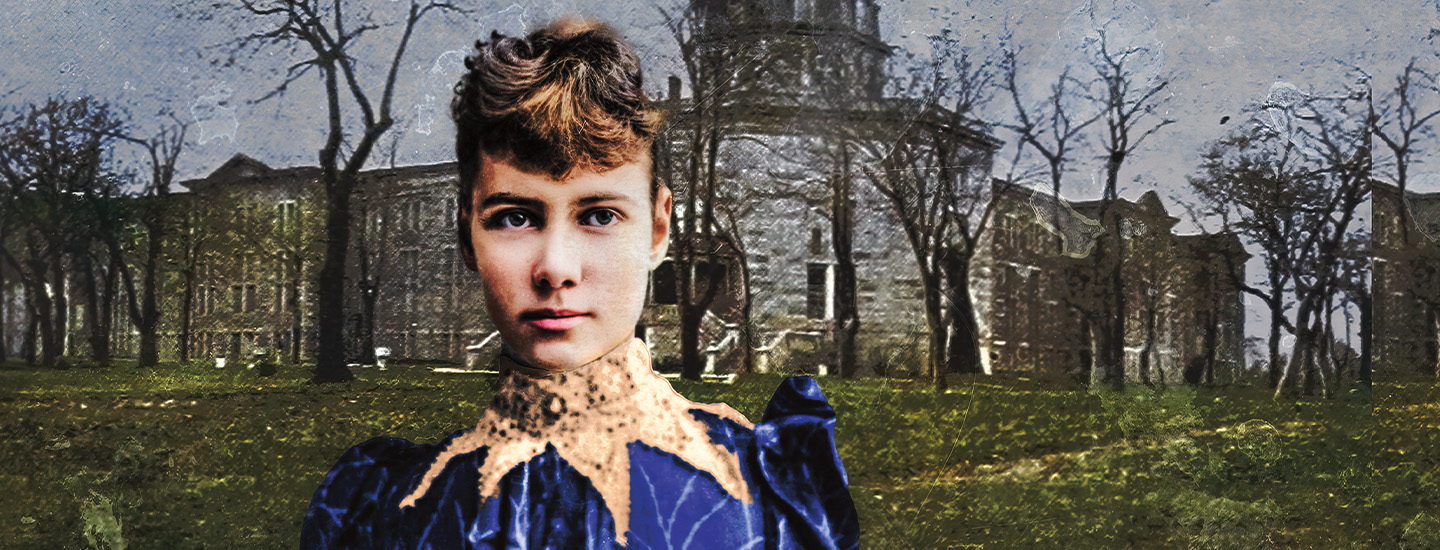Nellie Bly’s first day at the psychiatric hospital was unlike anything she could have imagined. After being fed spoiled food, she was led into a bathroom where a worker poured bucket after bucket of ice-cold, dirty water over her head, forcing her to take a bath.
“My teeth chattered and my limbs were goose-fleshed and blue with cold,” Bly later wrote. “I think I experienced some of the sensations of a drowning person as they dragged me, gasping [and] shivering . . . from the tub.”
It was the fall of 1887, and Bly, then 23, had been committed to a women’s mental health facility on Blackwell’s Island in New York City. But Bly didn’t have a mental illness. Instead, she was an undercover journalist who had faked being sick so doctors would commit her. Her goal: to expose the inhumane living conditions at the hospital and the brutal treatment of the patients.
Nellie Bly’s first day at the psychiatric hospital was not like anything she could have imagined. She was fed spoiled food. Then she was led into a bathroom. There, a worker poured bucket after bucket of dirty, ice-cold water over her head, forcing her to take a bath.
“My teeth chattered and my limbs were goose-fleshed and blue with cold,” Bly later wrote. “I think I experienced some of the sensations of a drowning person as they dragged me, gasping [and] shivering . . . from the tub.”
It was the fall of 1887. Bly, then 23, had been put into a women’s mental health facility. It was on Blackwell’s Island in New York City. But Bly did not have a mental illness. Instead, she was an undercover journalist. She had faked being sick so doctors would commit her. Her goal was to expose the inhumane living conditions at the hospital and the brutal treatment of the patients.

